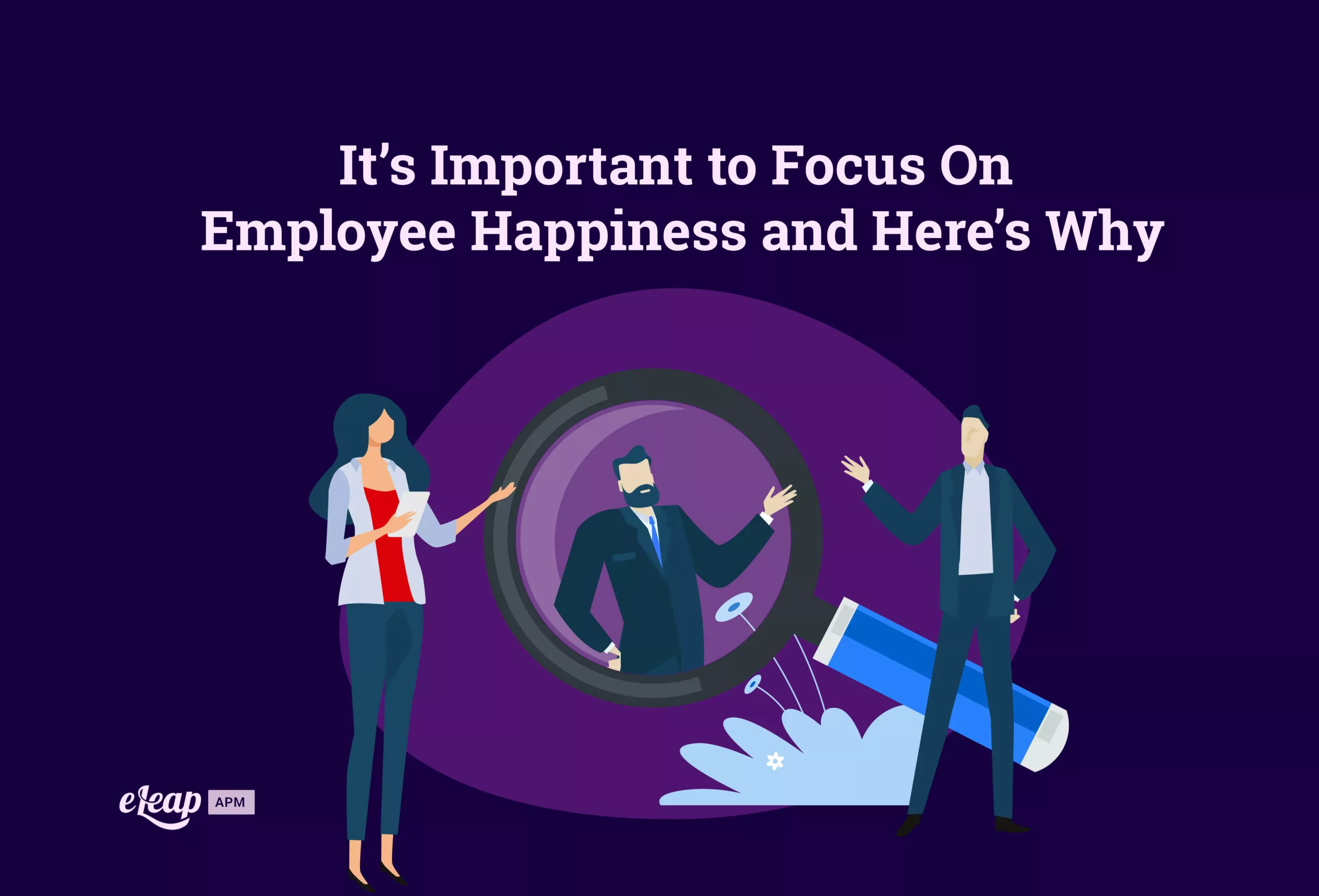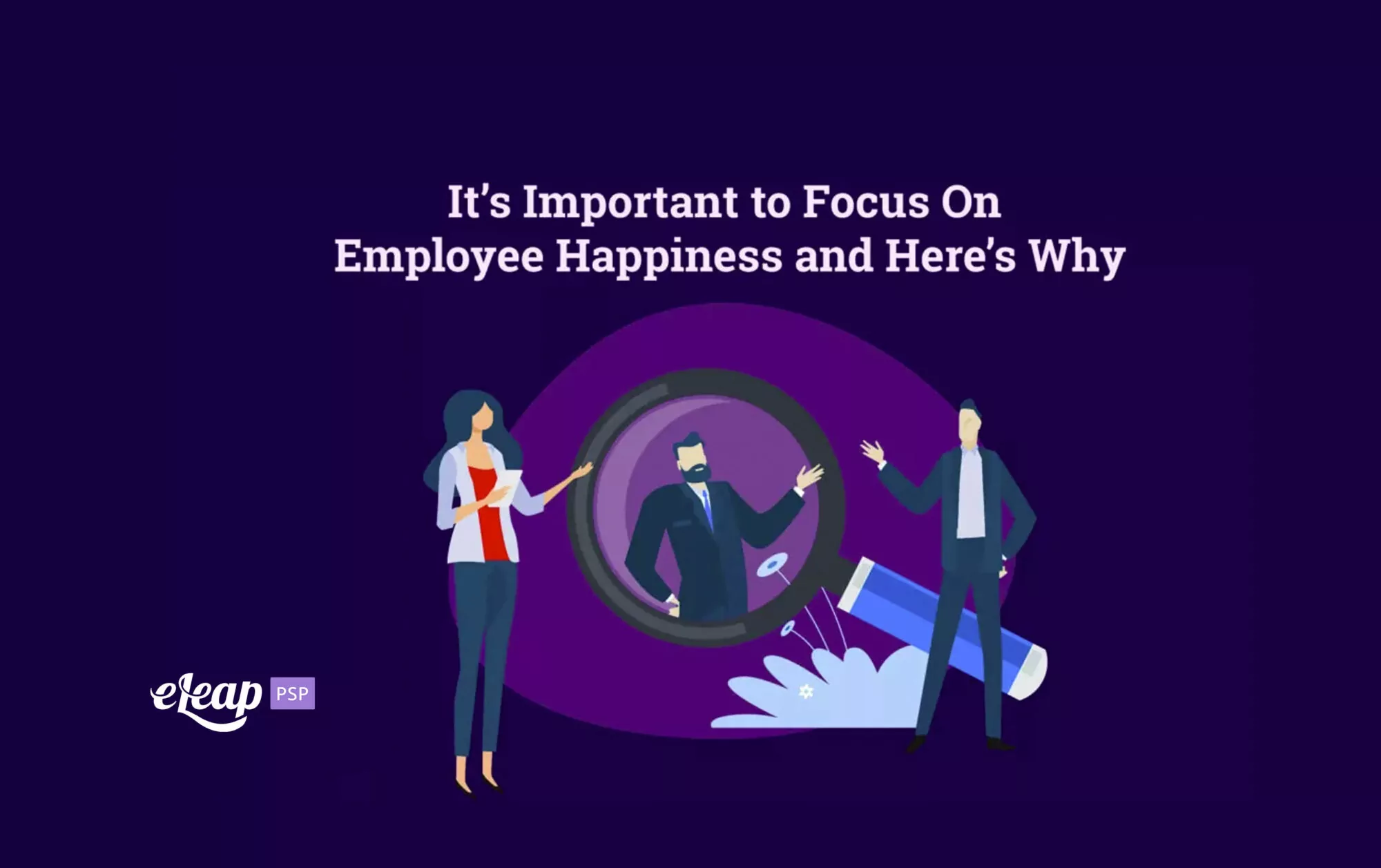It’s Important to Focus On Employee Happiness and Here’s Why

Happiness can be a difficult emotion to understand in many ways. It tends to be fleeting for a lot of people and achieving overall happiness in all aspects of life is something almost everyone strives for. Of course, it’s much easier said than done, and a large component of happiness comes from how happy you are with your job and when you’re at work. Achieving happiness may seem like a personal dilemma, but organizations should actually take the time and effort to help their employees feel happy at work. Happier employees are significantly more likely to perform well at work. They’re more productive, more fulfilled, less likely to be sick, and more likely to stick around in the long run. So, it’s obvious that organizations should put effort into employee happiness. But how exactly can you go about this?

What Exactly Is Happiness and Why Is It Important?
One of the most important things to realize before delving into what exactly happiness is to know that happiness doesn’t look the same to everyone. One person’s happiness may not be the same as another. This is particularly important for leaders to realize, as they need to know that their happiness is not necessarily the same as that of their employees.
Happiness can loosely and generally be defined as the combination of how good you feel on a day-to-day basis and satisfaction with your life in general. Happify collected research that shows that 10 percent of happiness is determined by circumstance, 50 percent by biology, and 40 percent by thoughts, behaviors, and actions. It’s possible to learn to think, act, and behave in a way that makes one happy. So, even though employee happiness may seem largely out of a lot of an organization’s control, it isn’t. In fact, it’s entirely possible to boost the overall happiness of your employees, if you know how, that is.
There are certain things that can boost “happiness hormones” in the brain. For example, being kinds to others or participating in creative activities that you enjoy. The integration of these types of activities on a regular basis can work wonders when it comes to overall happiness.
The issue for many organizations is the general consensus that you can’t make someone else happy. We can only make ourselves happy. Of course, that’s largely true. But that doesn’t mean there aren’t certain things that organizations can focus on to generally help employees feel happier. Because happiness is generally measured as overall satisfaction with life as well as how good you feel from day to day, work plays a huge role in employee happiness overall. It’s hard to feel happy in general if you’re unhappy at work.
A happy life is better than an unhappy one, even if it’s for no other reason. In the short-term, short-term, and long-term, studies show that happiness preserves health, strengthens immunity, lowers stress, reduces aches and pains, and even increases lifespan.
Increasingly, schools and businesses recognize the importance of mental well-being in addition to physical health. As a result, happiness has become not only an individual pursuit but also a business issue.
Why Workplace Happiness Should Be a Priority
A happy workforce has the ability to reap invaluable benefits for your employees and, as a result, your organization as a whole. In fact, there is a 12% increase in productivity among happy workers. Their collaboration and creativity tend to be stronger as well. This isn’t just to do with how they’re feeling, happiness has actually been shown to lead to improved brain function. A sense of purpose and happiness engages the brain.
The actions that most organizations take to boost happiness don’t always cover the full spectrum of what it means to ensure your employees are happy in the workplace. Instead of focusing on creating a work environment that’s essentially just a playground, employers ought to create a culture of collaboration where people are encouraged to be innovative and motivated to do well.
Of course, it can be tough to do this, since as we determined earlier, happiness might feel or look different to different people. But there are some ways you can cover your bases. In order to create employee satisfaction, organizations have created a variety of policies and activities such as providing regular employee feedback, investing in learning and development, incentivizing wellness, and building in fun time. In addition, purposeful work should be stressed.
In order to create a happy work environment, you need to have a general understanding of how well your organization is functioning as a whole.
You then need to figure out the best ways to boost and bolster happiness throughout the workings of the organization. This includes all aspects of the way your organization functions. From hiring employees who have positive mindsets, providing plentiful opportunities for development and growth, teaching your employees the critical importance of feedback culture, and ensuring that there is an atmosphere of psychological safety. These are all important components to fostering happiness in the workplace that can’t be overlooked.
Overall, organizations should make focusing on employee happiness an utmost priority. Of course, it’s not possible to make someone else happy, but there are steps you can take to help boost happiness levels overall and ensure your employees are generally happy at work. By focusing on happiness, you can help your employees be better workers. They can be more productive, think better, work together more efficiently, they’re less likely to be sick, and a number of other benefits are directly associated with overall happiness levels. Don’t think that happiness just means letting employees play games during their lunch break or providing free snacks and coffee, these things don’t actually boost happiness overall. Instead, focus on the above-discussed points to help your employees feel happier overall.